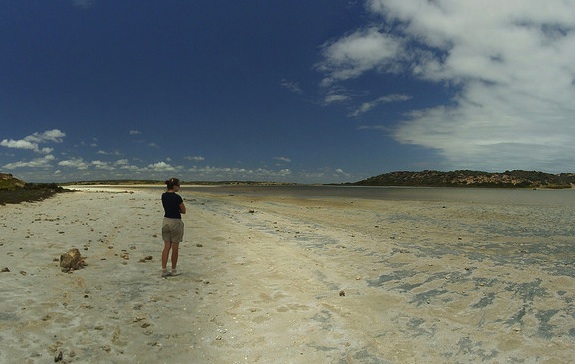There Should Be an Endangered Species List for Ecosystems, Too
Listing an ecosystem or animal as endangered does not save it from extinction, but it can bring attention and inspire protection

Australia’s Coorong lagoons are critically endangered, according to the new ecosystem assessment guidelines. Photo: Tom Paton
The IUCN Red List—the most comprehensive inventory of disappearing species around the world—warns that snow leopards are endangered and Mekong giant catfish are on the brink of extinction. But what about the habitats these species live in? In the journal PLoS One, an international team of 34 scientists propose that ecosystems, too, should be evaluated for red-list status.
In their paper, they write:
The scientific challenges in building a unified risk assessment framework for ecosystems are likely greater than those faced during development of Red List criteria for species.
Many of the mechanisms and symptoms of species vulnerability are relevant to ecosystems, because species are integral parts of ecosystems. Yet ecosystems embody processes and higher-order components of biodiversity that are difficult or impossible to account for in species-by-species assessment.
Those obstacles include designing criteria both specific enough to capture the special features of any given ecosystem and general enough to apply all over the globe. To solve this problem, the team assessed 20 diverse ecosystems from around the world—seagrass meadows, coastal sandstone upland swamps, red gum forests and semi-evergreen vine thickets. Science World Report continues:
The scientists then used five criteria to determine whether these environments were critically endangered, endangered or vulnerable. These criteria included how fast the ecosystem was declining, the size of the area involved, the characteristics of the physical environment, biological processes and how they interact and how all of these factors come together.
From their initial analyses, the researchers gave each ecosystem a listing, such as “least concern,” “vulnerable” or “endangered.” Their results indicate that the Coorong lagoons in southern Australia, karst rising springs and coastal sandstone upland swamps are all critically endangered—on the verge of extinction, if business continues as usual.
More from Smithsonian.com:
People Do a Better Job of Picking Endangered Species Than the Government
Nine Species Saved from Extinction
/https://tf-cmsv2-smithsonianmag-media.s3.amazonaws.com/accounts/headshot/Rachel-Nuwer-240.jpg)
/https://tf-cmsv2-smithsonianmag-media.s3.amazonaws.com/accounts/headshot/Rachel-Nuwer-240.jpg)